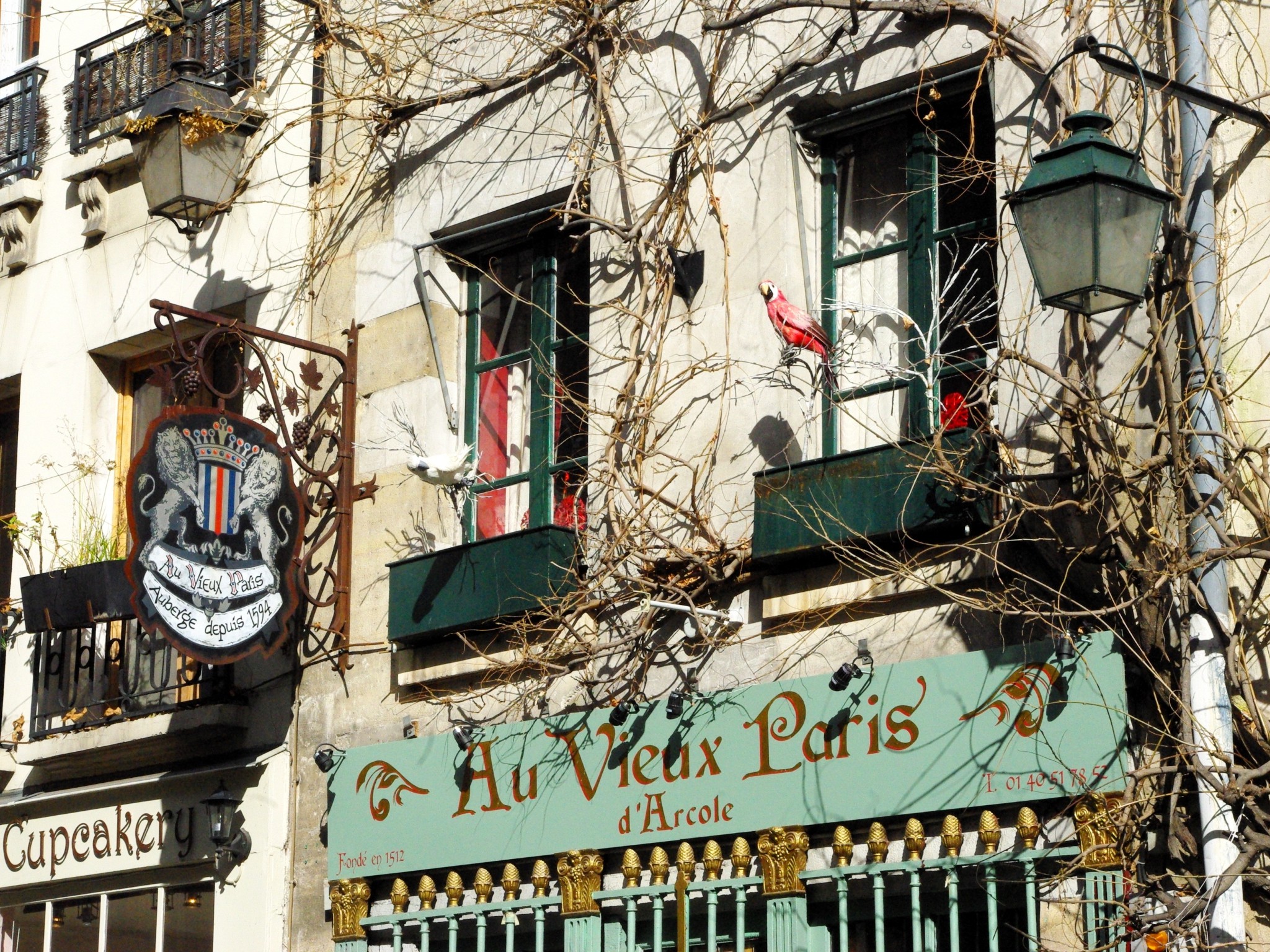Recently we took advantage of a beautiful sunny day to climb the towers of Notre-Dame. Once back on dry land we continued our stroll in a place of history and heritage that is little known by the millions of tourists attracted by the fame of Paris’ Gothic cathedral. Follow us on the northeastern part of Île de la Cité where Paris seems to have stood still for centuries… And let’s look out at some hidden spots on the Île de la Cité
My Hidden Spots on the Île de la Cité
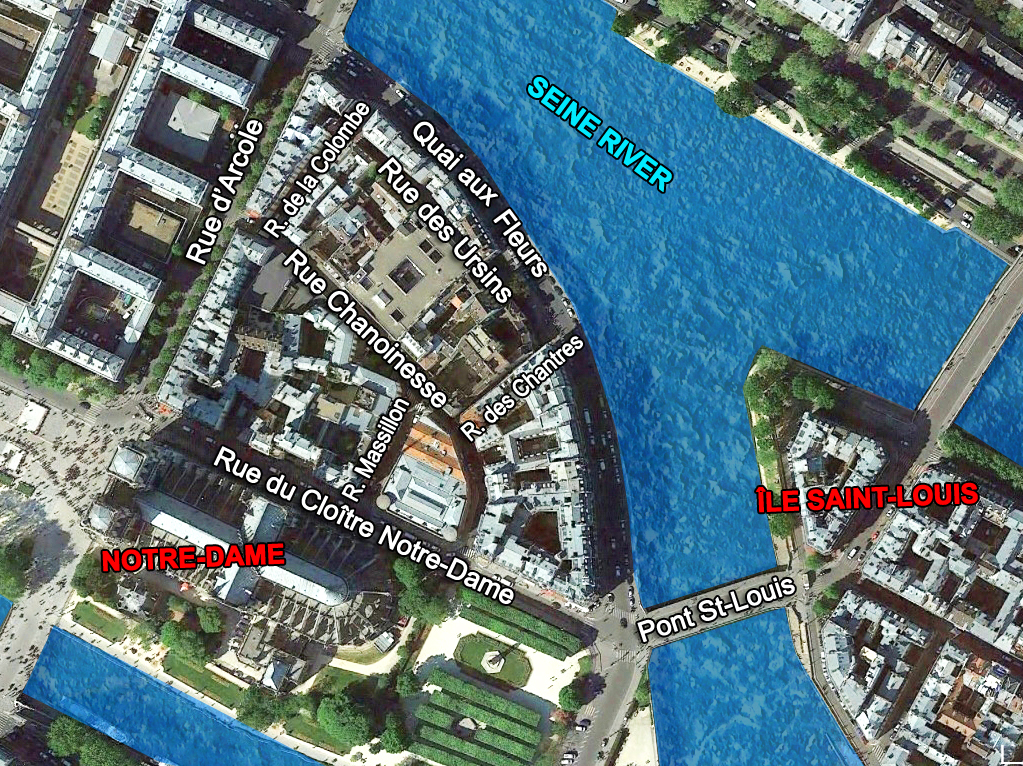
The ship-shaped island of Île de la Cité includes grand monuments and vast complexes such as Notre-Dame and the Palais de la Cité. Since Ancient Times it has been the historical heart of the city.
Today, tourists flock to the cathedral and the Sainte-Chapelle, crossing the Seine on one of the many bridges that connect the Right and Left banks to the island.
They wander from the Square du Vert Galant to the Pont-Neuf, the royal square of Place Dauphine and the beautiful Flower and Birds Market.
Haussmann’s great urban works
Since the mid-19th century, the wide boulevards have crossed the island from North to South. Bordered by imposing administrative and Haussmannian buildings, they gave Île de la Cité a completely different aspect from before.
No more medieval houses, no more slums, no more cut-throat narrow streets. Baron Haussmann seems to have done a very good job and the island as we see it today is nothing like what it used to be at the time of Quasimodo and Esmeralda… Or is it?
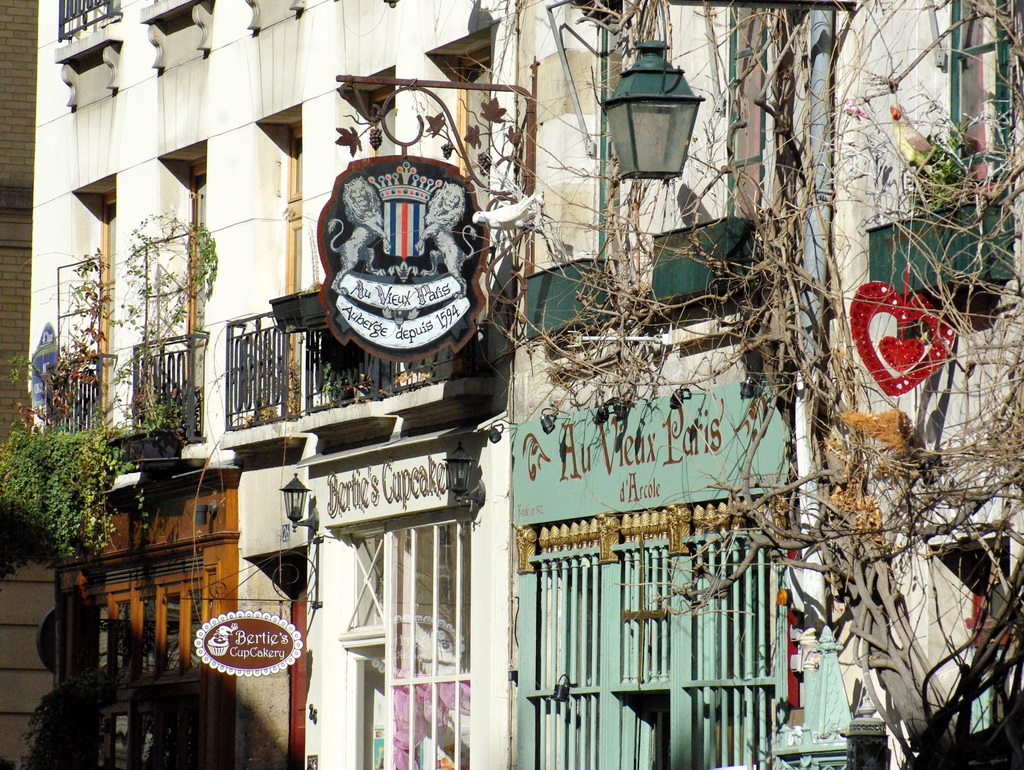
For as in the story of a famous Gaul, one small part of indomitable Lutetia still holds out against the invaders… (a little nod to Asterix!)
This little part of Île de la Cité which has kept its authentic atmosphere is little known by tourists who come by the millions to visit neighbouring Notre-Dame.
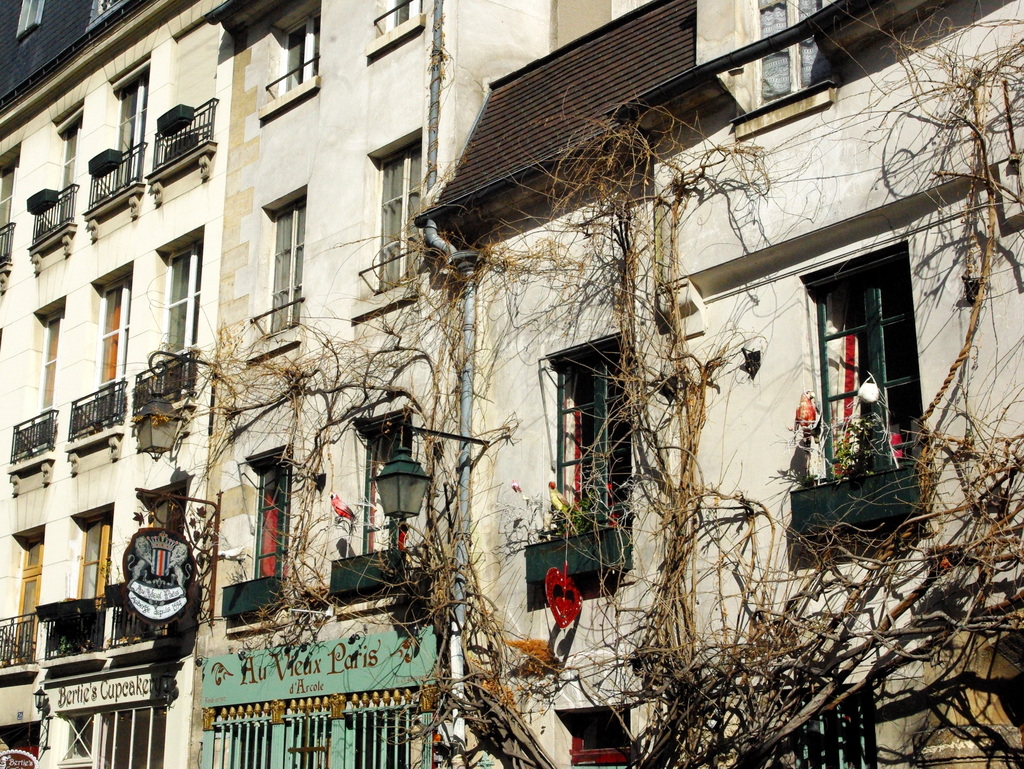
There is much to discover if one takes the time: the narrow cobblestone streets lined with peaceful buildings, a few bistrots and boutique stores, medieval remains, romantic lampposts… a small world under the protection of the towering Notre-Dame cathedral.
From the top of the towers of the cathedral, this little part of the island can be seen with its distinctive Parisian rooftops:
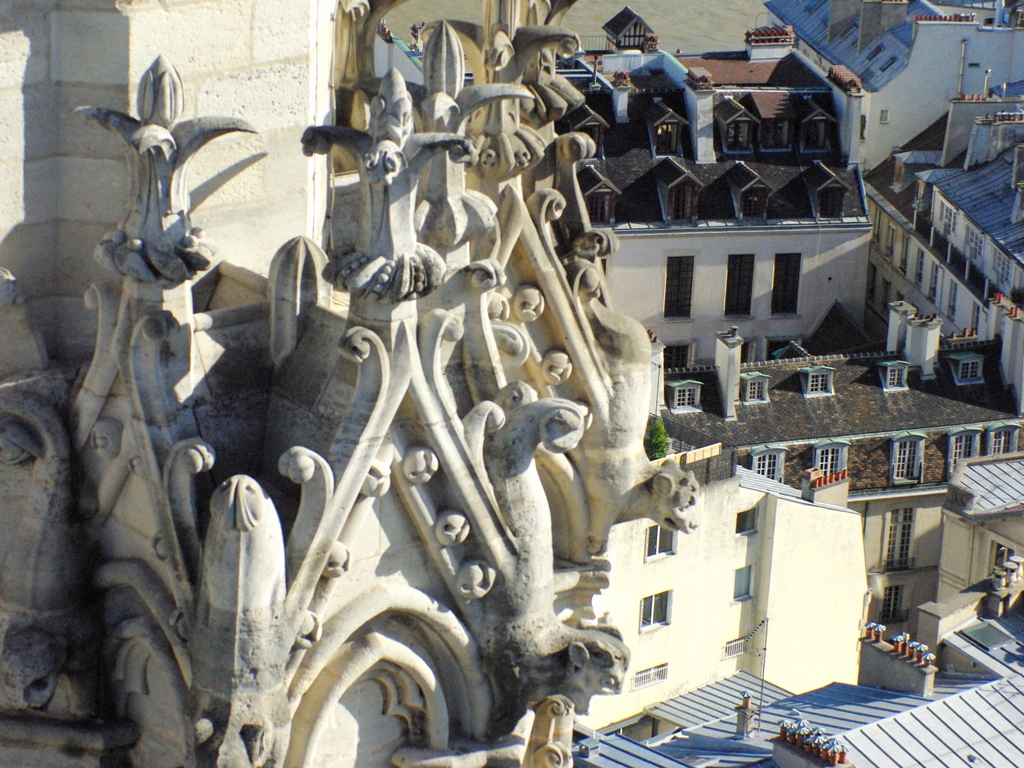
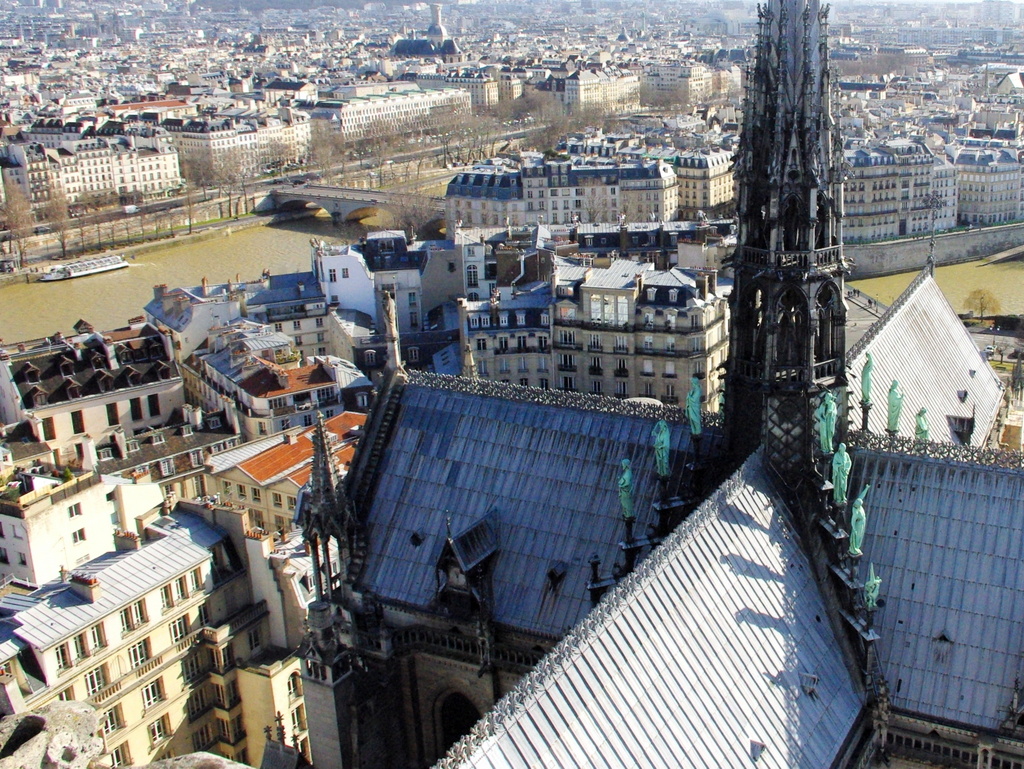
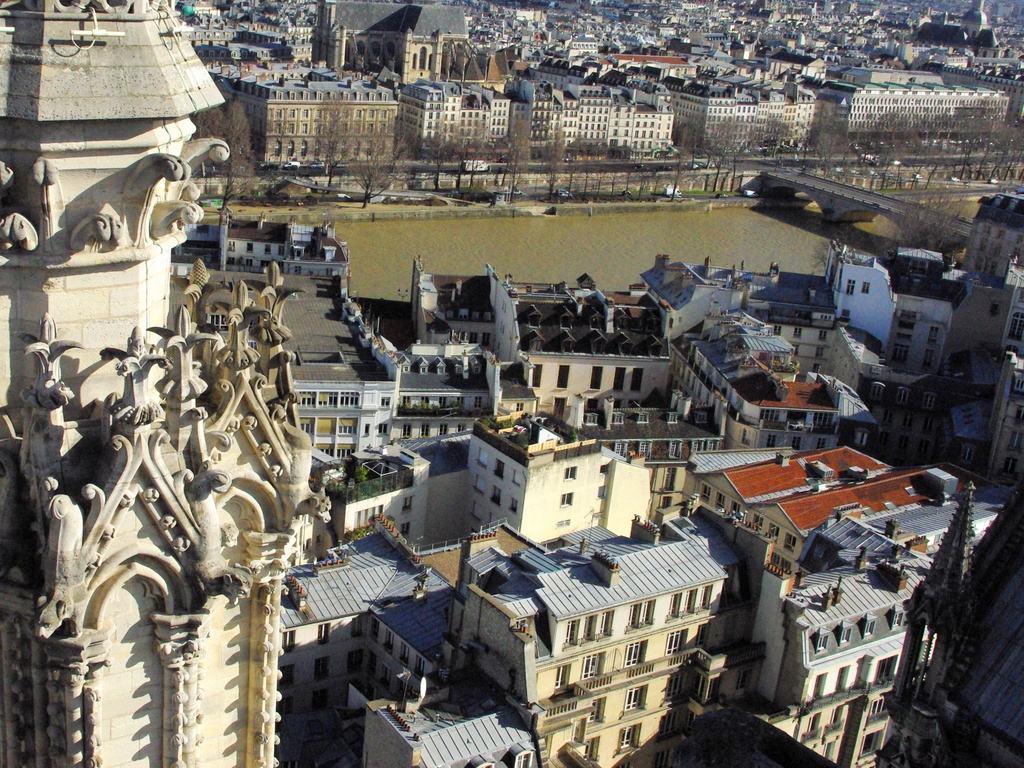
The entrance to this neighbourhood is located near the Pont Saint-Louis.

Rue Chanoinesse
One hundred metres further, turn right to Rue Chanoinesse. A few residential buildings give a certain cachet to the street: some are typical Haussmannian blocks, others are made with red bricks.
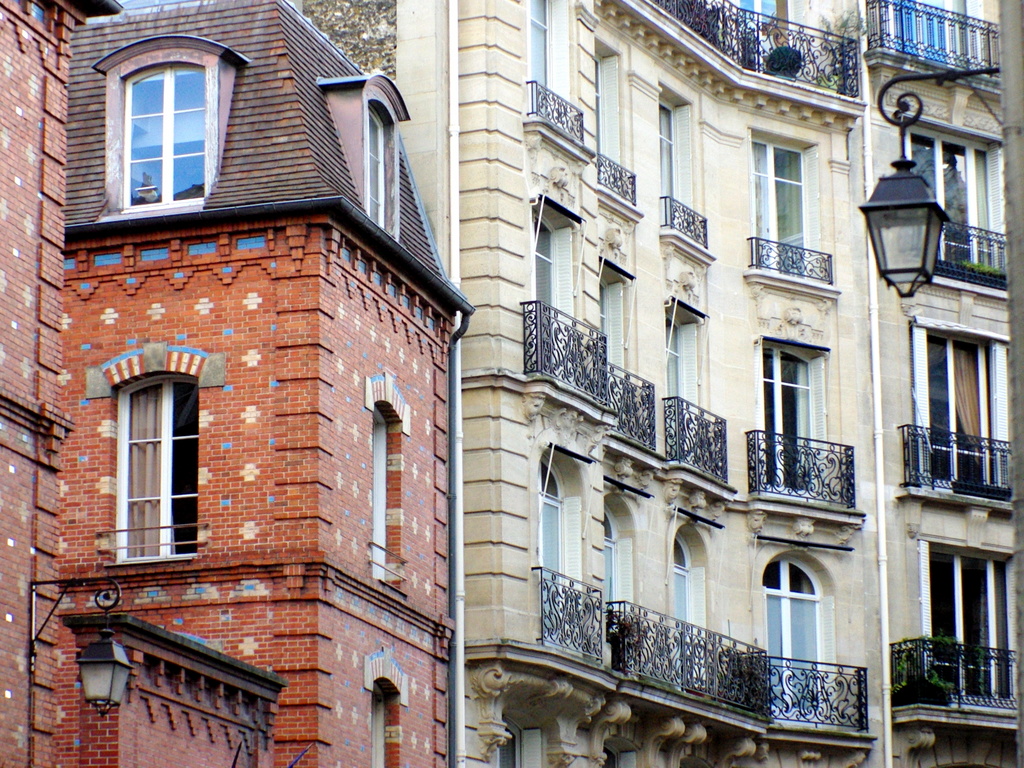
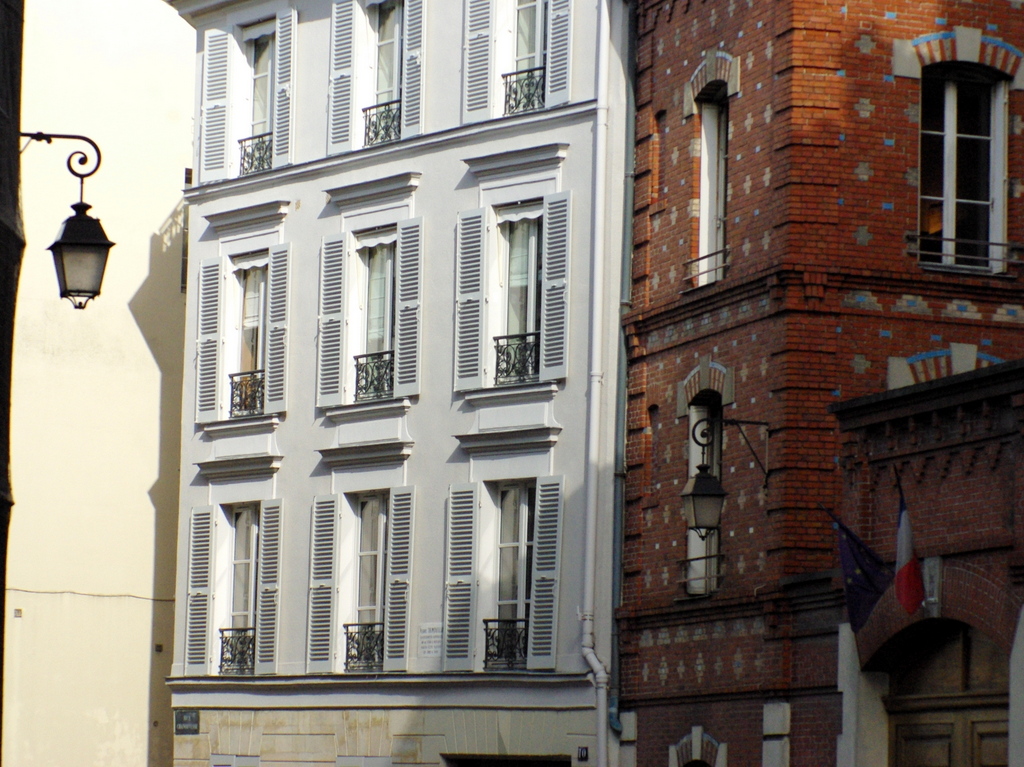
At the corner with Rue Massillon, there is a fine view of Notre-Dame‘s spire which soars high above the roofs and chimneys.
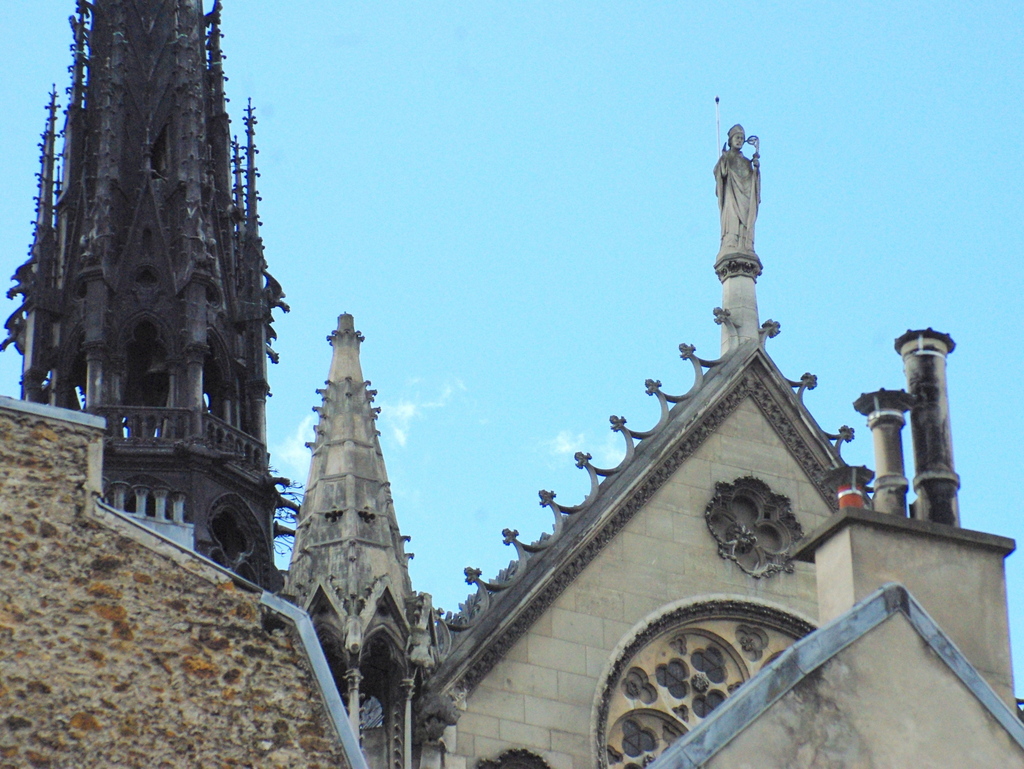
Au vieux Paris d’Arcole
A bit further, still on 24 Rue Chanoinesse stands a very old inn: Au Vieux Paris d’Arcole. This is the most Instagrammable façade on the Île de la Cité! On its left is a curious cupcake store…
The house of the Vieux Paris d’Arcole dates from 1512, at a time when the construction of Notre-Dame de Paris was nearing completion (although a signpost indicates it became an inn in 1594).
It is said that it housed the cathedral’s canon. Thus, for nearly six months, it was the home of a canon who became one of the popes of Avignon, Clement VIII.
The bishopric of Paris sold it in 1723 to become a wine bar. This can still be seen in the exterior grille which protected the merchandise on display while ensuring good ventilation.
Listed as a historical monument, the house is distinguished by its magnificent floral and plant decoration. Indeed, Au Vieux Paris d’Arcole benefits from an exemption as a “tourist exception”. Thus, the Paris City Council authorises the presence of a very imposing wisteria planted in 1946, 7 metres high and 22 metres long.
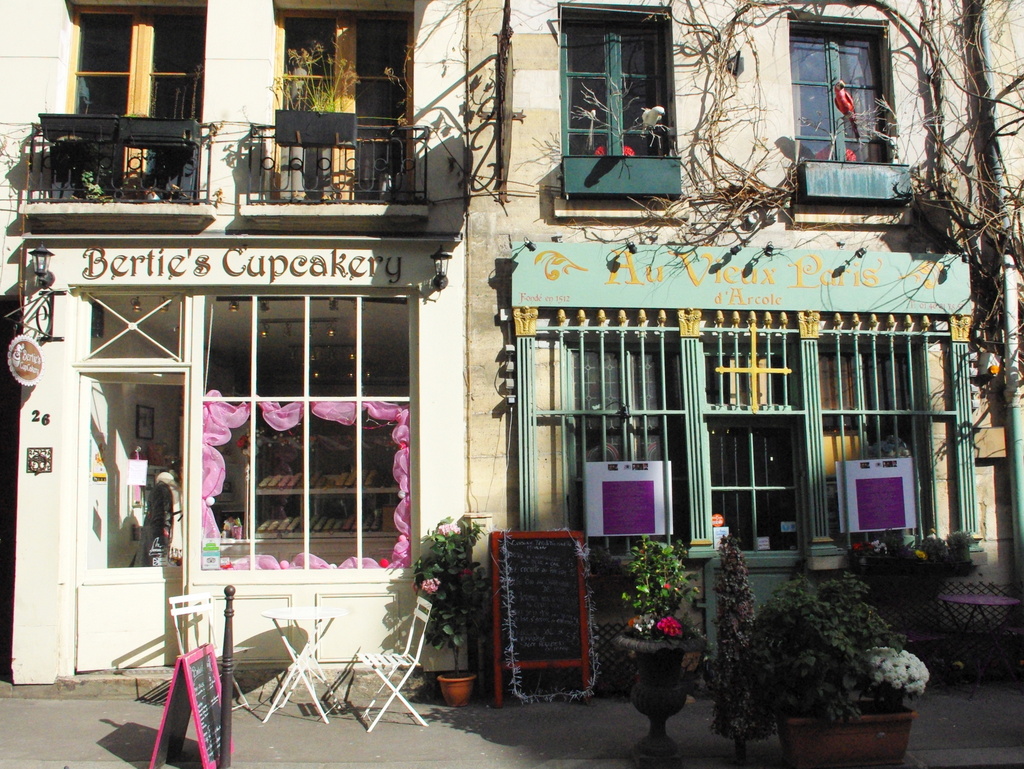
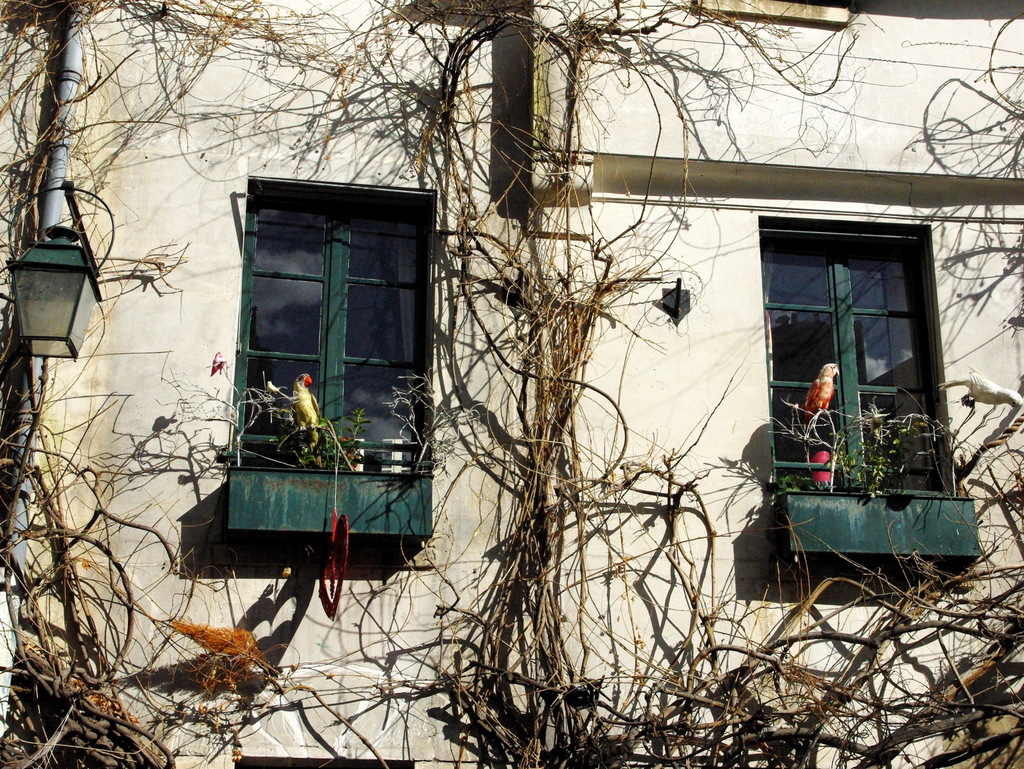
Rue de la Colombe and rue des Ursins
Turn right to Rue de la Colombe and once at the corner with Rue des Ursins, check behind you the typical Parisian scene. We seem far away from the Haussmann boulevards that are actually just across the street.
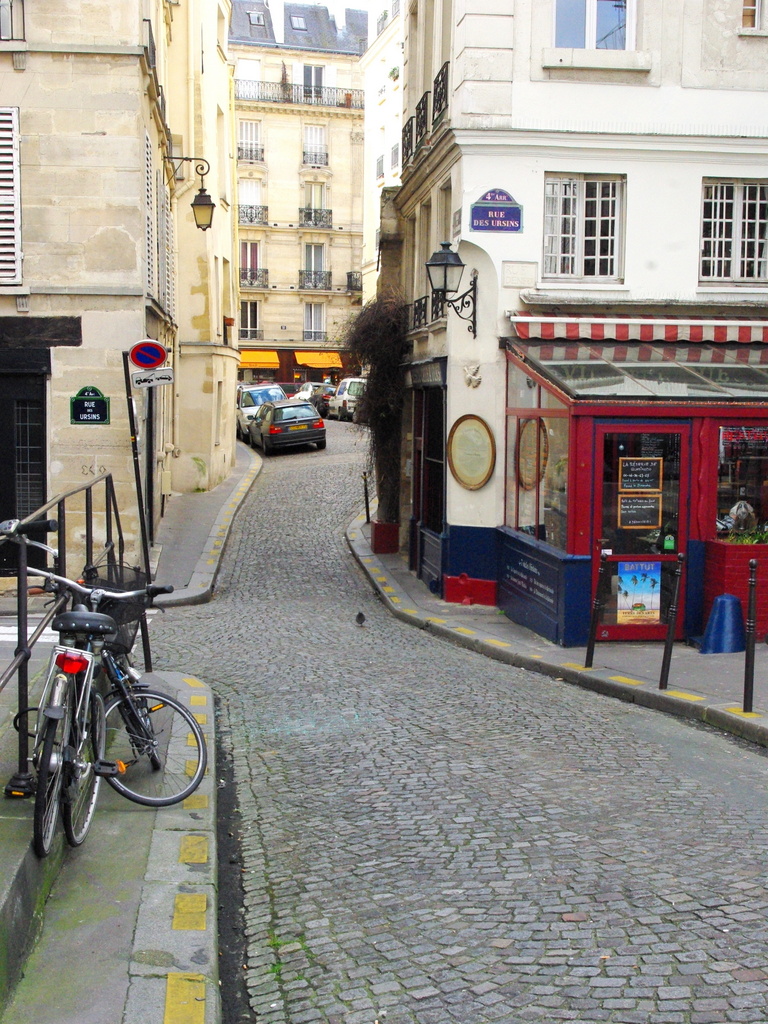
Walk along Rue des Ursins, a narrow street that leads to the Quai aux Fleurs. Passed the small garden of Les Ursins, the street is bordered by a stone house with medieval window frames.
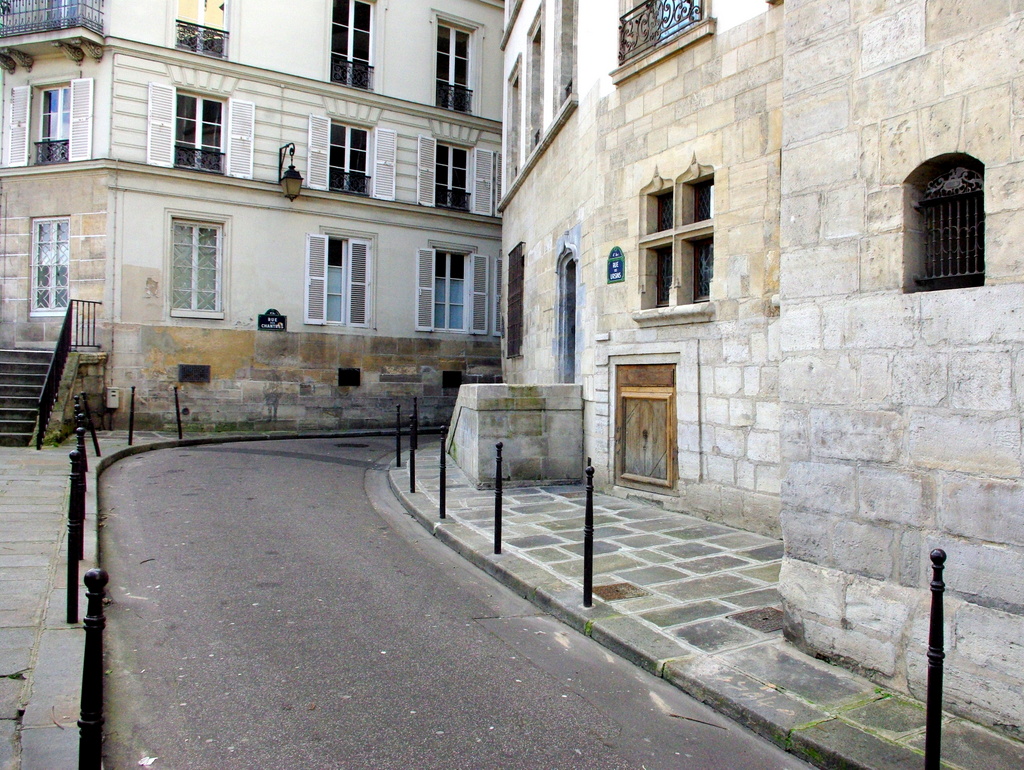

Rue des Ursins takes its name from a mansion “Hôtel Ursin” dismantled in the 17th century. It was also called “Hell Street” in the 16th century.

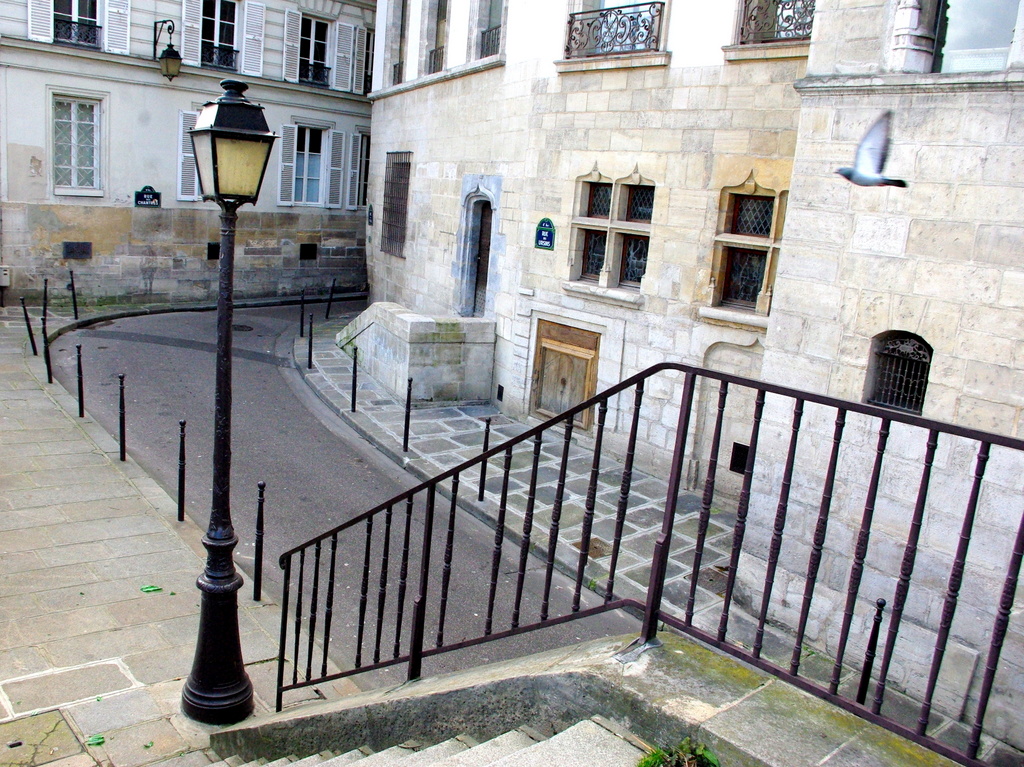
Do not be fooled by appearances: this medieval-looking house was heavily restored in 1958 and once owned by Aga Khan.
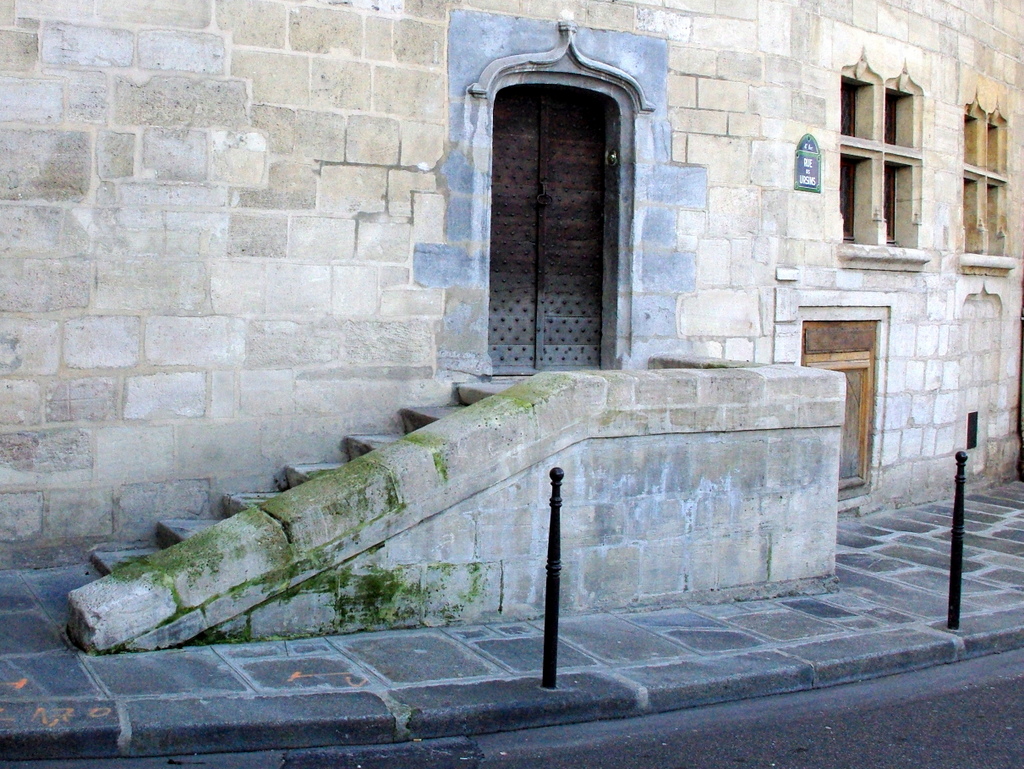
Rue des Chantres
The Rue des Chantres is one of Paris’ narrowest streets. Named after the cantors of the cathedral’s cloister, it is rather a dark street.

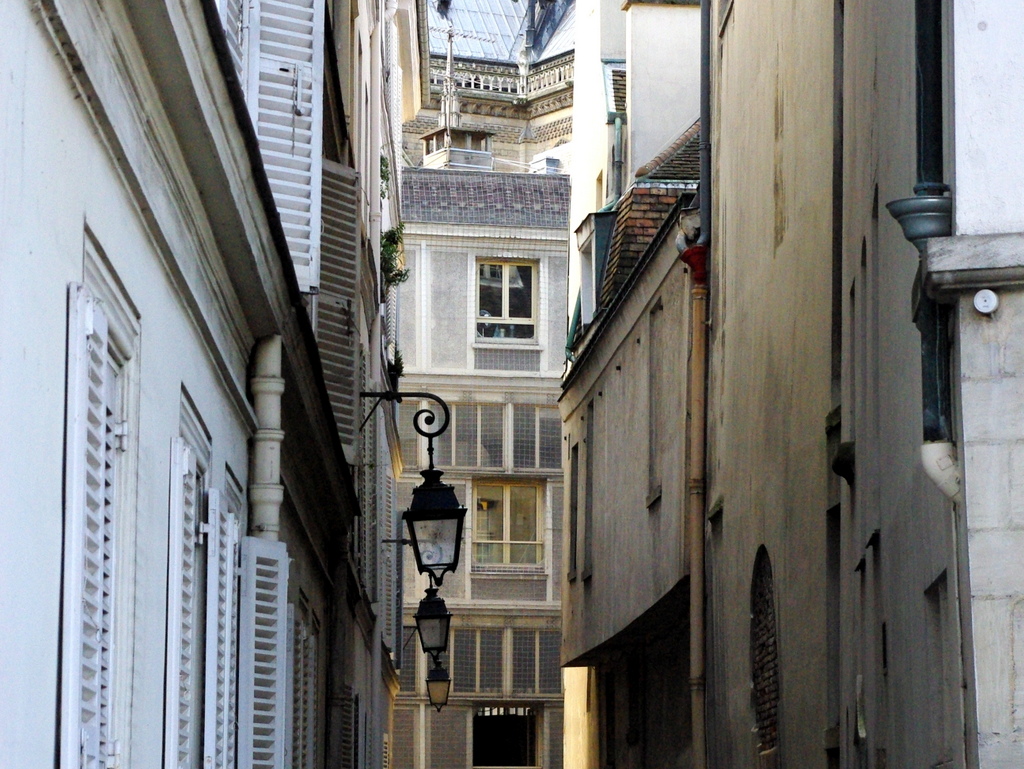
The spire of Notre-Dame soaring high above Rue des Ursins can be seen from the Quai aux Fleurs.

Rue des Chantres leads back to Rue Chanoinesse from where it is easy to reach Notre-Dame Cathedral.
Find out more!
Find out more about the Ile de la Cité:
- Explore the island on the blog
- Notre-Dame de Paris: a guide to the Gothic cathedral
- Ile de la Cité on wikipedia

